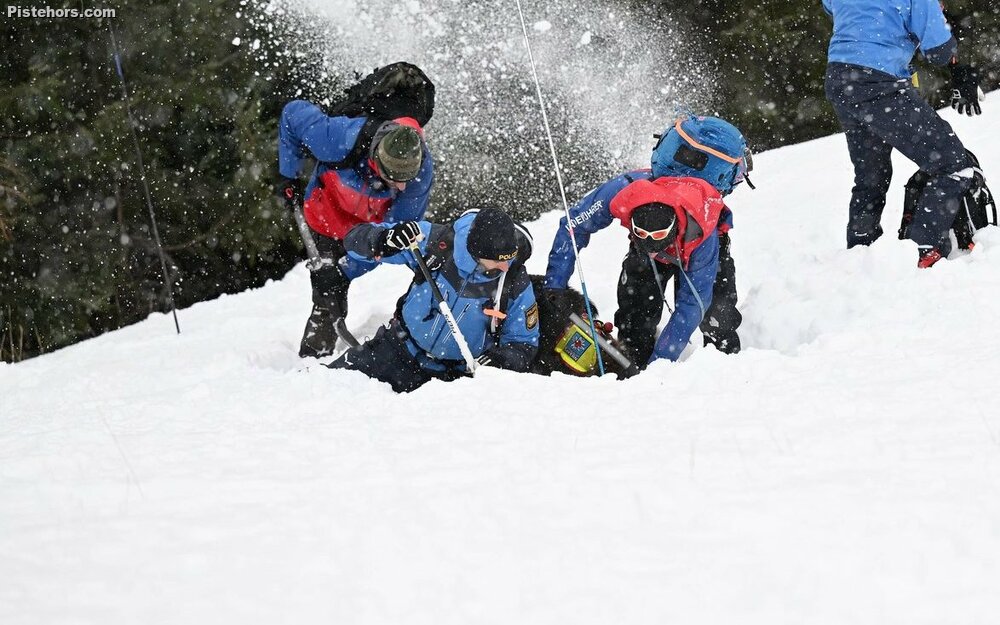Who Is Responsible When a Backcountry Accident Happens? Inside the Legal Reality Facing Ski Tourers and Mountaineers in France. As winter backcountry travel grows in popularity, French courts are increasingly asked to decide who, if anyone, is responsible when the mountains turn deadly.
Ski touring, splitboarding and winter mountaineering offer a sense of freedom rarely matched elsewhere. But when tragedy strikes, the legal aftermath can be far less liberating. Despite the informal nature of most mountain trips, French courts have repeatedly reaffirmed a clear principle: responsibility does not vanish just because the group is made of friends.
Investigations by the PGHM are required to determine whether a mistake, a poor decision, or an act of negligence contributed to an accident. And if they can identify someone whose actions played a significant role, that person may be held both criminally or civilly liable.
“The aim is not to punish,” one former mountain rescuer explains. “The aim is to understand what happened and ensure survivors or families can be compensated.”

The jurisprudence is surprisingly clear. Several court cases, many involving non-professionals, show that ordinary people can be prosecuted after a group accident. The examples span alpinism, skiing, and mountaineering outings where nobody was officially in charge.
In one case two young alpinists were convicted after allowing a slower partner to fall behind during a glacier ascent. The man eventually slipped to his death. Judges ruled that failing to stay in contact amounted to imprudence, and contributed directly to the fatal accident.
In another ruling, two snowboarders were convicted after they progressed along a ridgeline without verifying whether skiers were beneath them. The avalanche they released killed a young woman in a different group. The court held that the pair “should have anticipated the presence of others” in the fall line.
Three skiers were prosecuted after ignoring a municipal prohibition during a period of avalanche risk 4. Their passage triggered a slide that swept onto a groomed piste. Whether they were alone or in a group did not matter: their decision was enough to establish liability.
These examples, drawn from French jurisprudence on mountain accidents, illustrate a consistent trend: group outings do not dilute responsibility, they often reveal it.
A more recent case underscores how seriously courts view the responsibilities of those leading an outing.
On 6 July 2014, during the Traversée des Courtes in the Mont-Blanc massif, a group from the Club alpin français (CAF) of Bourg-en-Bresse became separated. Two faster participants moved ahead, out of sight of the rest of the team. They vanished. Their bodies have never been found.
The Bonneville criminal court gave its ruling. The volunteer leader, a 70-year-old member of the club, was sentenced to a one year suspended imprisonment and ordered to pay nearly €300,000 in damages to civil parties. Insurance companies say that compensation can run into millions, for example where the victim was a Managing Director of a British firm killed off piste skiing. When a ski guide asks group members what they do for a living he's not just making small talk, he's assessing his liability in case of accident.
In the Courtes' case the reasoning was clear: the leader should never have allowed the group to fragment in such committing terrain. In winter, the same logic easily extends to ski touring, snow shoeing and splitboarding: splitting up in dangerous winter terrain is not just dangerous, it can be criminal. If someone wants to split from the group a guide will get other group members to witness that he's been advised not to do this.
One of the least-known but most consequential legal ideas in mountain accidents is the notion of the “de facto leader.”
Courts frequently assign responsibility to the person who:
In other words, even if you never said, “Follow me,” you can still be treated legally as the leader — with all the responsibility that implies.
“In the eyes of the law, leadership is not declared — it is demonstrated.”
In one case we looked at, a mountaineering accident in 2007, a young man wanted to impress a girl by inviting her on a serious outdoor climbing trip in the Oisans mountain range. The man had previously only climbed on indoor walls in Lyon. The girl was killed in a fall and the investigation cataloged a series of errors: no climbing helmets, a poor belay, no knot at the end of the rope, error with the route etc. Things that may not have occurred to an indoor climber but the small experience he had made him legally responsible.
Documents from the Club alpin français emphasise another essential point: a club can be held liable if it allows a leader without adequate technical competence or training to supervise an outing. This applies year-round but is particularly serious in winter, where evaluating avalanche danger, choosing safe terrain, and managing group spacing require real expertise. Allowing an unqualified volunteer to lead a ski tour can create liability for both the leader and the club. Many clubs do not allow trips above risk level 3 as the risk is generalized to all slope aspects.
These cases reveal several important principles for anyone travelling in winter mountains:
These aren’t just good practices — they’re legal safeguards.
The mountains will always carry risk; that is part of their appeal. But the legal reality is clear: when something goes wrong, investigators will try to identify responsibility and they often succeed. They can even assign joint liability, say 70% to one person and 30% to another.
For winter backcountry travellers, understanding this terrain is as important as reading a snowpack or interpreting an avalanche forecast. Awareness, preparation, and humility are not just safety tools they are what protect you, your partners, and, in the worst case, your legal future.
Thankfully prosecutions are rare and frequently only result in suspended prison sentences but they open the door to compensation.